Six big California issues to follow into the new year

- Share via
Good morning, and welcome to the Essential California newsletter. It’s Friday, Dec. 30. I’m Ryan Fonseca.
I’m not usually one for predictions, mostly because I hate being wrong. But I am thinking about how major issues might evolve in the upcoming year.
This list is by no means a full account of every important issue affecting the state and the country. But these six questions will serve as a compass for me as I continue to bring you valuable context for understanding life in the Golden State. So, here goes:
1. How will California shift its response to the climate crisis?
A historic drought and statewide water shortages, fire years in place of fire seasons, deadly and disruptive heat waves, sea level rise — I don’t mean to sound too doom-and-gloomy, but there’s a lot to worry about when it comes to climate change and its effect on California.
Much of the discussion about solutions seems to focus on electric vehicles. California leads the nation in EVs and that trend is expected to continue — especially with a state mandate to end sales of new gas-powered cars by 2035. But how will the state and local governments address the lack of public charging infrastructure? And of course, gas-powered cars won’t just disappear.
Let’s take the personal responsibility part out of the equation for now. Sure, if we all switched to electric cars and trucks tomorrow, emissions would drop dramatically. But we’d still be relying on many emissions-generating power sources to keep our cars moving.
That’s why I’m curious about renewable energy infrastructure, such as offshore wind. A recent federal auction gave five companies leases for waters off the California coastline, though it could take several years before turbines get up and spinning.
2. Will transit projects and street redesigns get more Californians out of our cars (and actually make streets safer)?
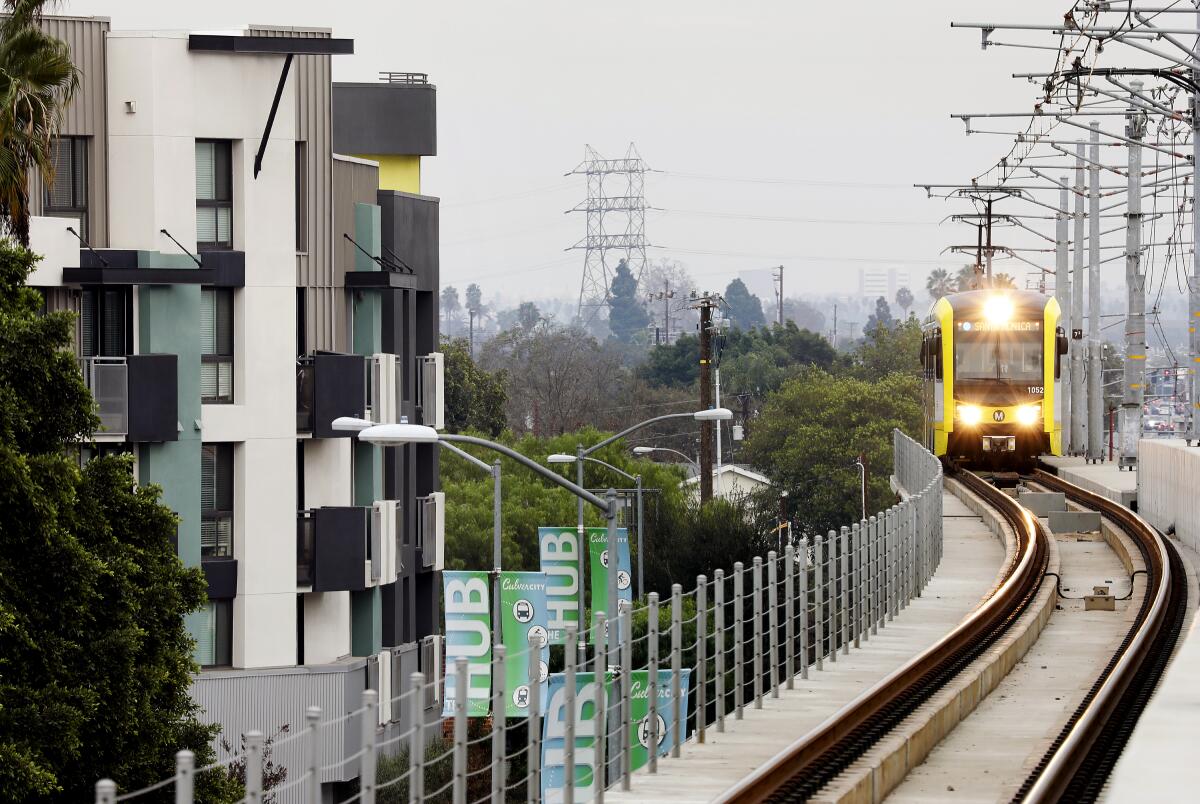
2023 is expected to bring long-awaited openings and groundbreakings to major public transit projects.
In L.A. County, the much-delayed Regional Connector project is expected to open this year, creating more seamless light rail travel for riders crossing through downtown L.A. And major construction is projected to begin on the Bay Area Rapid Transit’s project to extend through San Jose and into the neighboring city of Santa Clara.
Californians may also notice the continuing efforts to redesign local streets to make them more equitable for pedestrians, bus riders and cyclists.
One way to encourage people to walk, roll or take transit over driving is by making streets safer, but L.A. and other California cities have struggled to do that. In fact, streets in many communities have become more deadly in recent years — and 2022 could bring a new high to that surge in traffic violence.
In Los Angeles, preliminary data through Dec. 17 show that 298 people were killed in collisions. That exceeds 2021’s total of 294, and with a couple weeks of data still to be processed, the death toll will likely top 300. Roughly half of the victims were pedestrians killed by drivers.
People of color are overrepresented in traffic deaths, and often the communities with the highest share of victims are the ones with the least resources to improve infrastructure. “Equity” is a hot word in city halls and state departments right now — will meaningful action follow?
Check out "The Times" podcast for essential news and more
These days, waking up to current events can be, well, daunting. If you’re seeking a more balanced news diet, “The Times” podcast is for you. Gustavo Arellano, along with a diverse set of reporters from the award-winning L.A. Times newsroom, delivers the most interesting stories from the Los Angeles Times every Monday, Wednesday and Friday. Listen and subscribe wherever you get your podcasts.
3. Will we turn a corner on the housing and homelessness crisis?
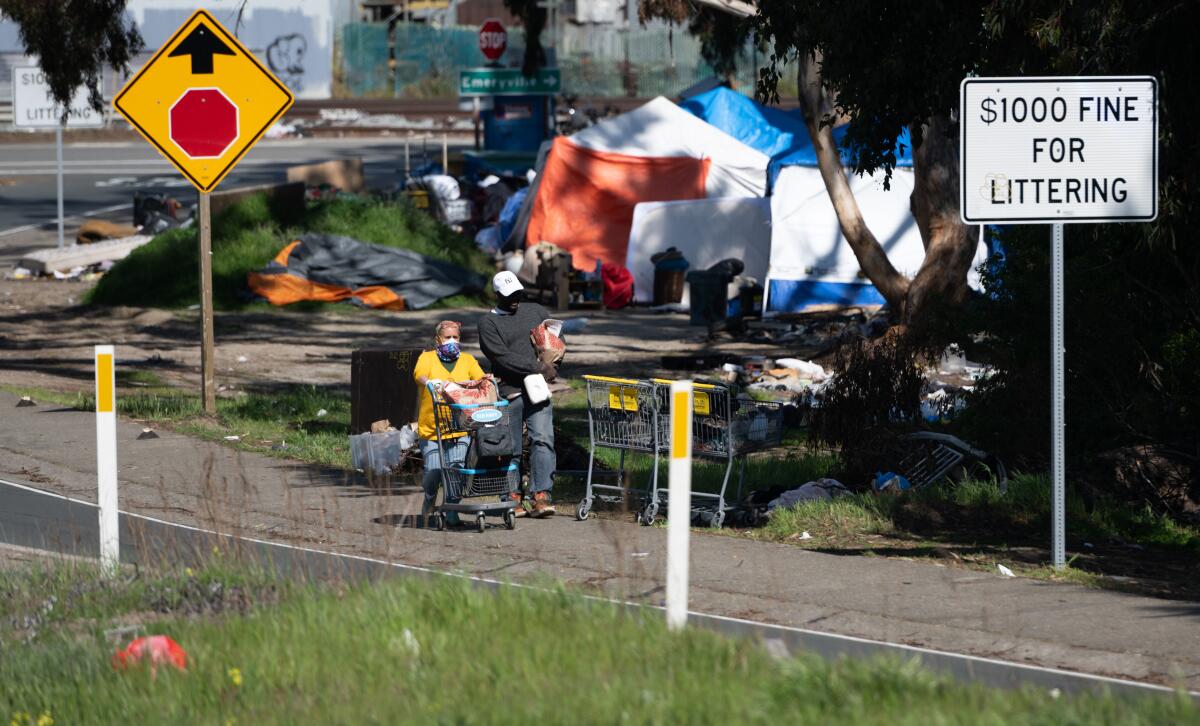
The state poured billions of dollars into efforts to get people off the streets and into supportive housing. But homelessness has gotten only worse in California in recent years.
A new report from the U.S. Department of Housing and Urban Development shows California accounts for nearly a third of people nationwide experiencing homelessness. We also lead the nation in the rate of homelessness, with 44 out of every 10,000 Californians going unhoused.
So what will it take? One recent report says more money — $6 billion more each year. But it also outlines the immediate need for more housing, which some researchers say is the primary cause of homelessness.
So will cities start building at a level that will make a difference?
YIMBYism might be having a moment, but the opposition to new housing developments is entrenched and more creative than ever. And sometimes the process for constructing new housing takes years, like in San Francisco.
One piece of this I’m eager to watch is a new state law that eliminates parking minimums near major transit stops. Advocates see it as a way to encourage more development and keep costs down. It won’t happen overnight, but efforts to expand public transit and build more housing may begin to align in the coming years.
4. There’s still a pandemic. How will that affect Californians?

We’ll soon enter our fourth year of a global health crisis. With up to four vaccine shots in our systems, mask mandates lifted (for now) and most of our daily visits to work, grocery stores, restaurants and other destinations looking much like they did pre-2020, it can feel like the worst is behind us.
But COVID-19 deaths are surging this winter, though case rates are beginning to fall slightly.
We’re still getting a sense of the broader effects of the pandemic. That includes long COVID but also the threat of a resurgence in measles, dramatic learning loss among young Americans and more.
The hits keep on coming, and I’ll be looking to unpack more of them in 2023.
Support our journalism
5. Will the swell of organized labor movements continue?
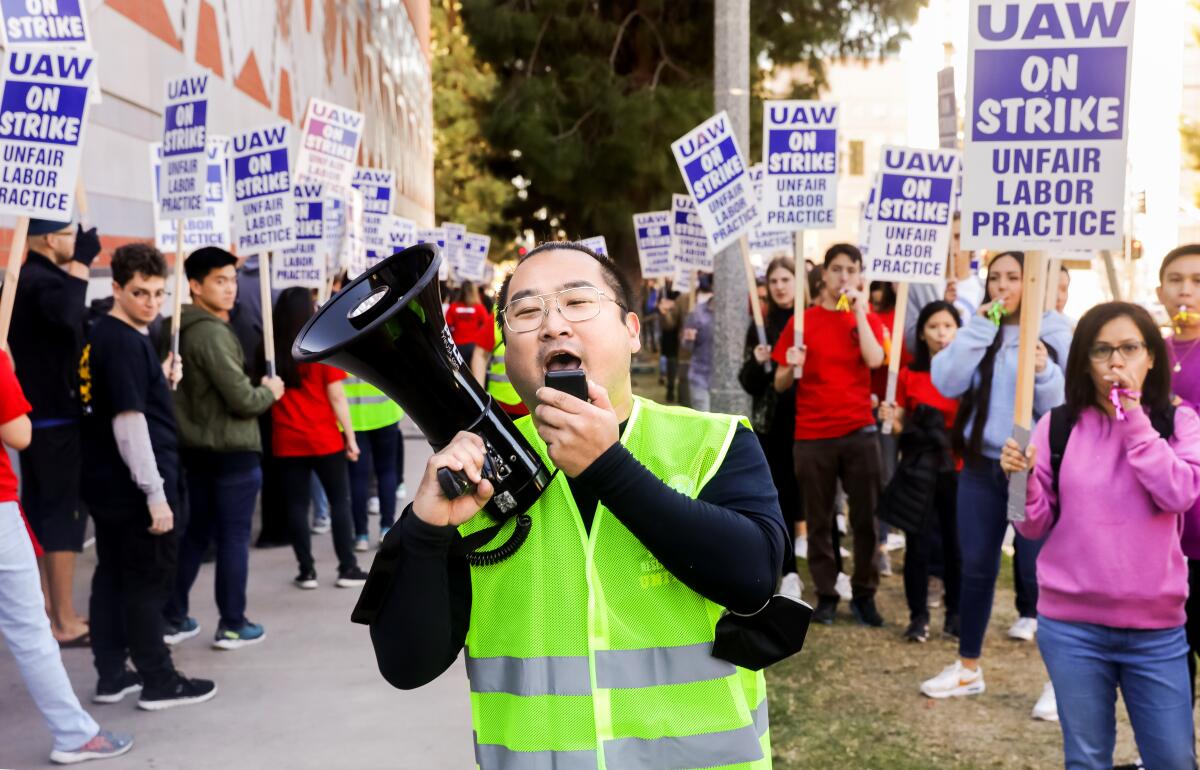
Support for labor unions is at the highest level in over 50 years, according to Gallup. The pandemic changed the way many Americans viewed work, and workers across an array of industries began to organize for better pay and working conditions.
That included efforts at major corporations like Amazon and Starbucks, but also smaller sectors with workers who maintain L.A. County’s bike share network, performers at Medieval Times in Buena Park and strippers at a bar in North Hollywood. And we just witnessed a historic labor strike by some 48,000 University of California academic workers.
Based on that upswell, it doesn’t seem the unionization wave will crest anytime soon, though corporations have made big moves to stifle organizing. The National Labor Relations Board reports union elections in fiscal year 2022 were up nearly 50% from the previous year. But it’s important to note that it can take a while between voting to form a union and securing a collective-bargaining contract. And when that takes too long for workers, we get strikes.
6. How will political power mobilize this year?
I try to live in the present, but so much of our political power structure is based on election years. This inevitably means a lot of media attention (especially nationally) is fixated on 2024. But what will political leaders across California do this year to improve Californians’ lives?
Los Angeles in particular seems poised for change. The second-largest city in the nation has a new mayor and several new faces on its powerful City Council, including progressives who could shake up the status quo at City Hall. City Controller, Kenneth Mejia, who ran on a platform of progressive reform, was particularly critical of the LAPD’s massive budget.
And there are still two council seats in limbo. The district represented by suspended Councilmember Mark Ridley-Thomas has a temporary caretaker, Heather Hutt, while the indicted councilman awaits trial on corruption charges (slated for March). And a special election has been set for April to fill the seat vacated by Nury Martinez, who resigned in October after leaked audio recording featured her making racist and derogatory remarks. Fellow Councilmember Kevin de León was also heard on those tapes but has so far refused to resign, despite demands from both the public and some of his fellow council members.
What other key California issues will you be focused on in 2023? Let us know at essentialcalifornia@latimes.com.
Free online games
Get our free daily crossword puzzle, sudoku, word search and arcade games in our new game center at latimes.com/games.
CALIFORNIA ALMANAC
Los Angeles: Cloudy, 62. San Diego: Mostly cloudy, 63. San Francisco: Rain, 60. San Jose: Rain likely, 62. Fresno: Chance of rain and patchy fog, 59. Sacramento: Rain, 57.
AND FINALLY
We’re trying something new down here! Earlier this month, I asked you to send us photos and blurbs about California landmarks that are interesting or important to you.
Today’s landmark love: Mt. Diablo in Contra Costa County, submitted by Los Angeles resident Karen Baker.
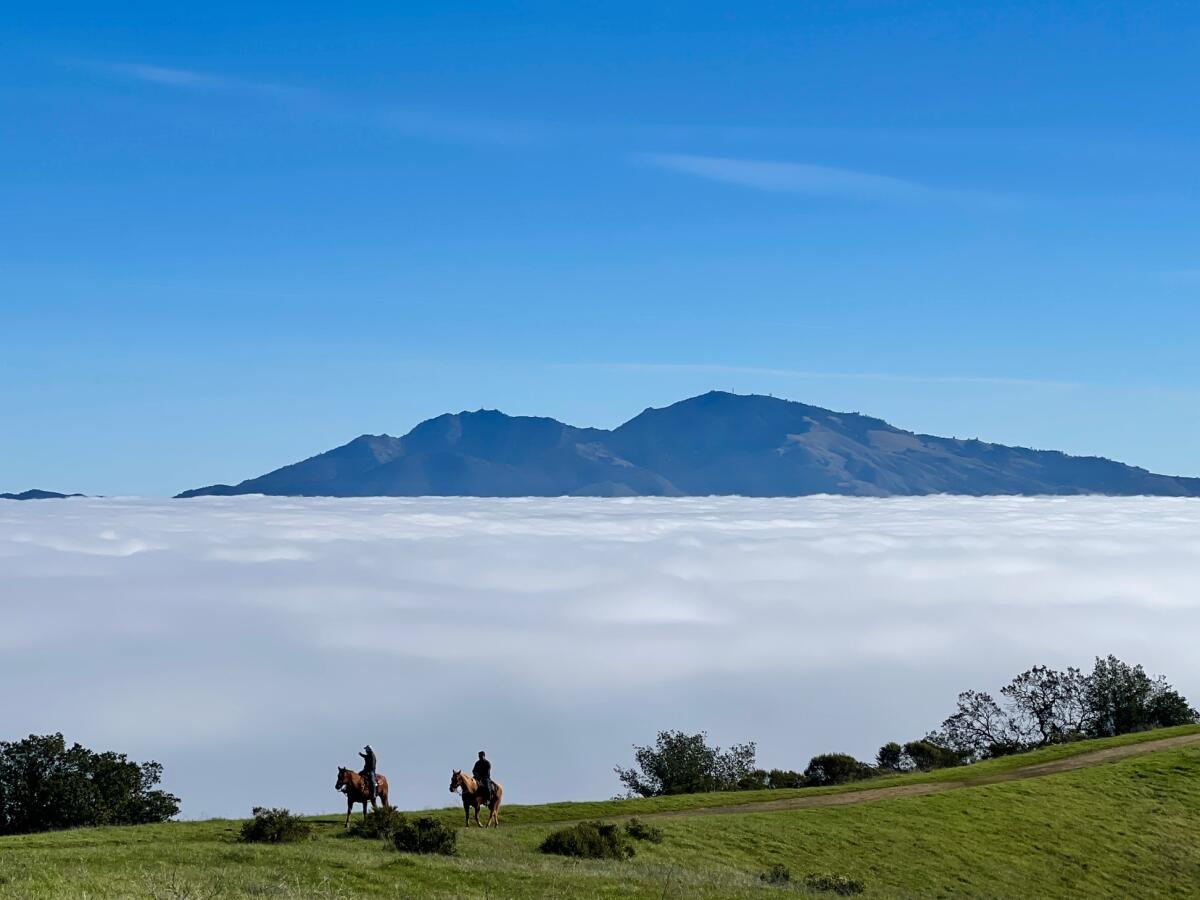
Karen writes:
For all who have lived, now live, and will live within its shadow, Mt. Diablo is an everyday reminder of California’s natural beauty and endurance. I was one of those people, residing within view of its summit for more than 20 years. Mt. Diablo was my hiking playground, and I often brought visitors to its 3,849-foot summit — the third highest in the San Francisco Bay Area — for jaw-dropping views that on a clear day include the San Francisco skyline and Farallon Islands to the west; Mt. Hamilton to the southeast; and even the Sierra Nevada and Cascades. Every year on Pearl Harbor Day, the beacon that sits atop Mt. Diablo is lit to honor those who lost their lives at Pearl Harbor. Called the “Eye of Diablo,” it once aided early transcontinental aviators. For me, Mt. Diablo is a personal beacon of sorts, for the place my husband and I raised our family and where I will always call home.
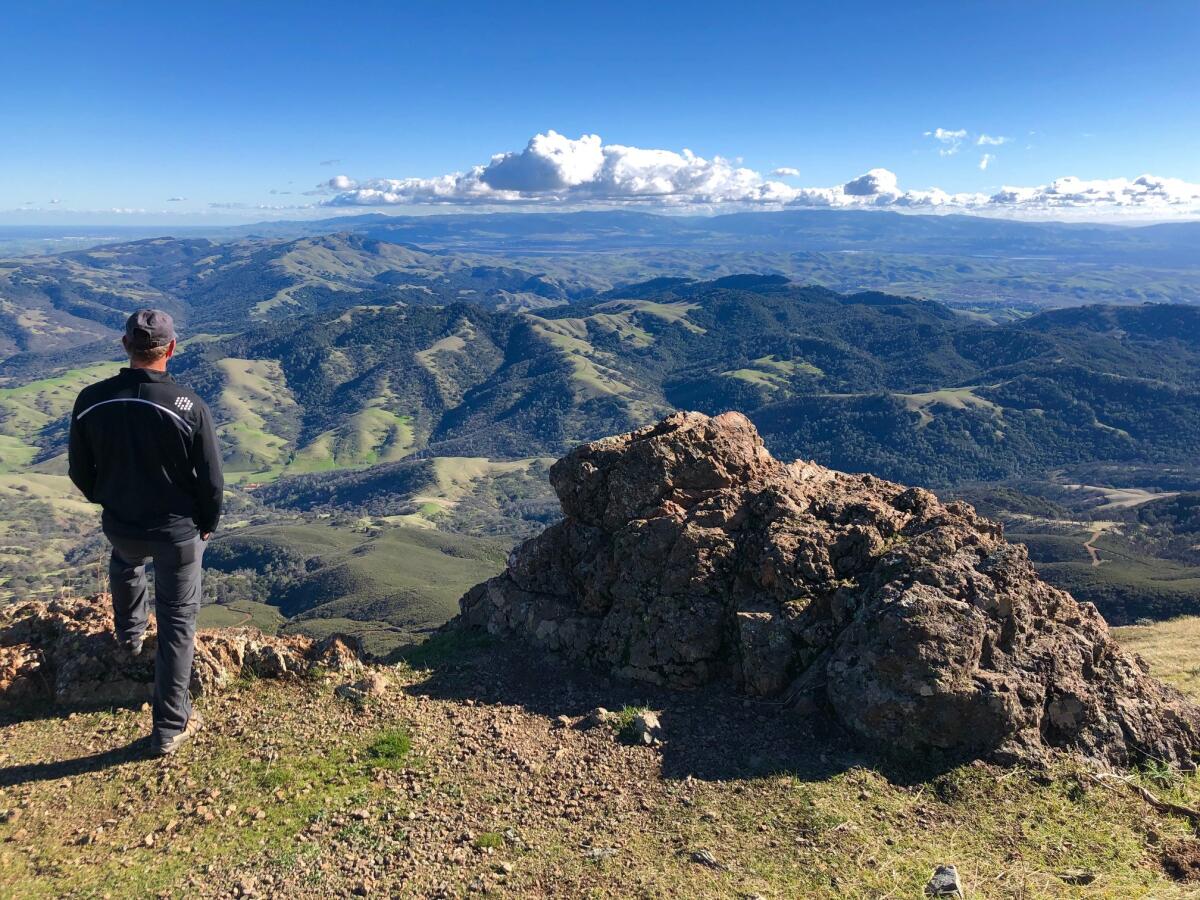
What are California’s essential landmarks? Fill out this form to send us your photos of a special spot in California — natural or human-made. Tell us why it’s interesting and what makes it a symbol of life in the Golden State. Please be sure to include only photos taken directly by you. Your submission could be featured in a future edition of the newsletter.
Please let us know what we can do to make this newsletter more useful to you. Send comments to essentialcalifornia@latimes.com.
Sign up for Essential California
The most important California stories and recommendations in your inbox every morning.
You may occasionally receive promotional content from the Los Angeles Times.







